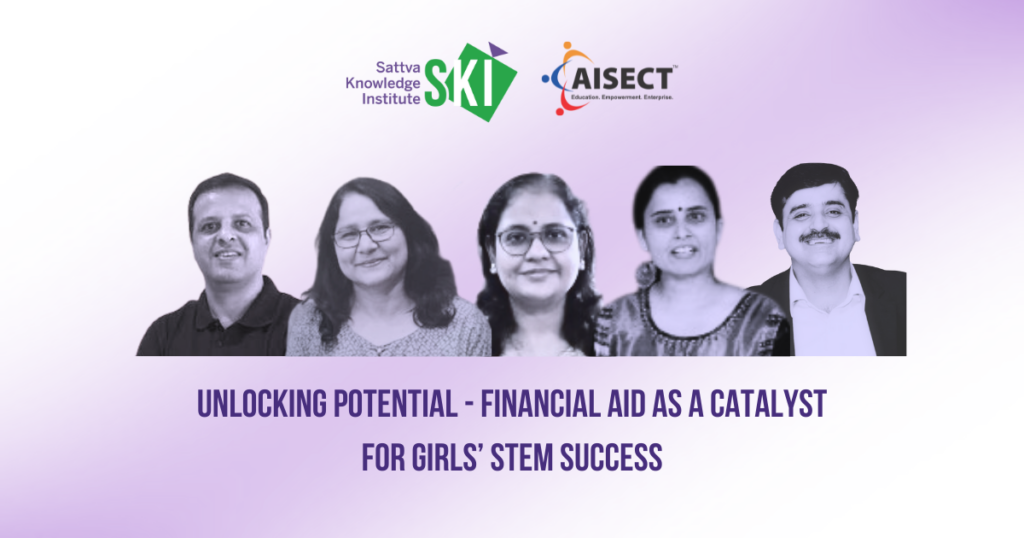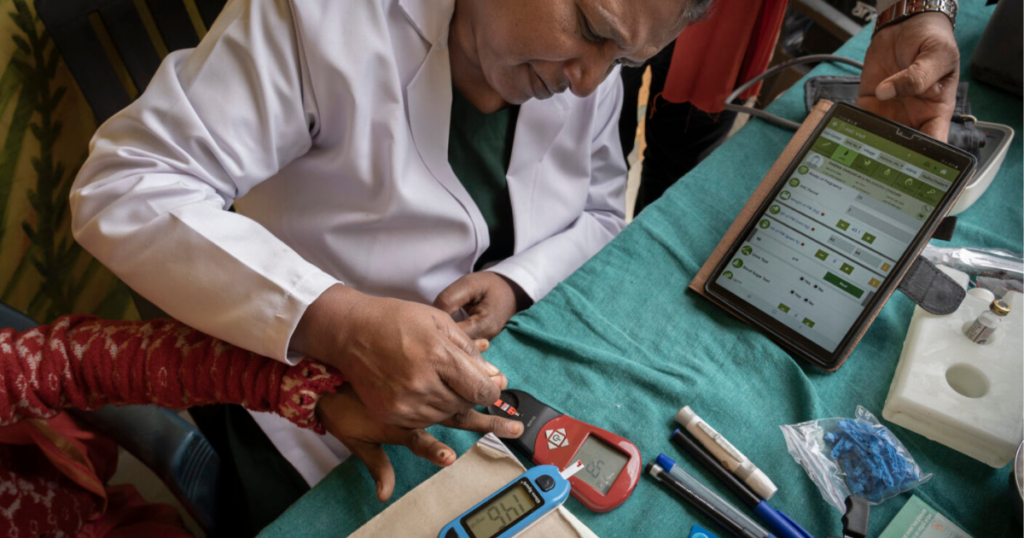The digital public goods glossary is a resource to help comprehend the key terms driving today’s digital landscape, focusing on Digital Public Goods (DPGs), and the broader Digital Public Infrastructure (DPI) they support. It offers clear definitions for terms–such as open source, open data, open standards and digital platforms–that serve as building blocks for DPIs, upon which essential services like online government platforms (e.g., Unified Payment Interface) and digital identity systems (e.g., Aadhar) operate. This comprehensively defined set of resources and technologies is helpful to navigate open-source solutions which empower a more equitable and sustainable digital world.
Note: This is a dynamic list, and will be updated to reflect developments in the DPG space.
A
Account Aggregators are entities that collect and provide access to financial information of a customer, based on their consent, to financial service providers.
Read:
- Revolutionising India’s Financial Ecosystem with Account Aggregators, Sattva Knowledge Institute
- Accelerating Financial Inclusion for Women’s SHGs with Account Aggregators, Sattva Knowledge Institute.
An API is a mechanism that allows two parts of a software to communicate with each other. It is an intermediary layer which connects computers or pieces of software to each other. The definitions and protocols within an API can help build third-party applications. For example, a weather API helps communicate a user’s request for information to an external server. Thereafter, it retrieves the weather data and displays the information in a user-friendly format.
B
A building block is a basic, reusable element that may comprise of data, API, or applications. The building block can be reused in multiple cases and solutions with
minimal effort, thus enabling design and innovation.
Read:
- GovStack Definitions, Digital Public Goods Alliance, May 2022; TOGAF Standard V9.2: Introduction to Building Blocks, The Open Group
C
A Common Digital Language means a set of APIs that can connect digital entities to interact and create innovative digital products. For example, the Hypertext Markup Language (HTML) is used to define the structure and content of web pages. It is used to create text pages and interactive applications.
D
Data exchange layers provide a standardised and interoperable method to exchange data, queries and services.
Read:
- What is Good Digital Public Infrastructure, Digital Impact Alliance
A data registry is an organised repository of distinct pieces of digital information
about data assets, datasets, schemas, data sources or data-related entities within an organisation or across a network.
Digital commons are resources like data, information, culture and knowledge which
are created and/or maintained online, and are available for collective action and shared access. Examples of digital commons include wikis, open-source software, and open-source licensing.
Read:
- Digital Commons, Concepts of the Digital Society, 2020.
A digital platform is an online space that allows transactions and interactions
between users. Typically owned by a single entity or orchestrator, it enables the discovery of services and service providers. These services can range from products to information. For example, Uber is a digital platform that connects drivers to customers for transportation services. Similarly, Airbnb provides a platform for booking and renting out short-term accommodation.
Read:
Digital public goods are technological resources – such as software, data, standards, or content – that are made available for public use, and contribute
to societal development, innovation, and advancement. To qualify as a DPG, products must meet a set of nine indicators, or DPG Standard, used by the Digital Public Goods Alliance (DPGA).
Read:
- Digital Public Goods, Digital Public Goods Alliance.
DPI is a set of digital capabilities such as digital identification, payment infrastructure and data exchange solutions. These capabilities work together to safely and efficiently deliver economic opportunities and social services to all citizens.
Read:
- DPI Overview, Centre for Digital Public Infrastructure;
- Driving Inclusion & Innovation at Scale Digital ID as a core DPI Building Block, Dr. Pramod Verma, Ekstep Foundation
- Explainer: What is digital public infrastructure?, Bill and Melinda Gates Foundation
Stacks consist of a set of components that work together for an application to function, and to enable data flow. Digital stacks are made up of multiple layers such
as identification, payment systems and data exchange. Together, they provide solutions at scale to enhance service delivery.
E
End-user applications are software tools, programs or interfaces that users interact with to perform specific tasks and solve problems. They are specifically designed and developed to fulfill the needs and requirements of individuals or end-users who directly interact with the applications.
F
Free and open source software is a software whose source code is open for inspection, modification and enhancement. For example, Android is a free and open-source mobile operating system. VLC Media Player is a free and open source media player known for its wide codec support and simple interface.
Read:
- Explaining Free and Open Source Software, Scot Colford
I
Interoperability refers to the capability of systems, devices or software applications to communicate, exchange information and work together effectively, without requiring extensive modifications or special adaptations.
- Interoperability, Peter Wegner, Brown University
- Towards Interoperability of Digital Services and Standard Setting, Observer Research Foundation
- Unpacking concepts & definitions – digital public Infrastructure, building blocks, and their relation to digital public goods, Digital Public Goods Alliance
M
Modular technologies are made up of independent and mutually exclusive micro-services, or subsystems to be easily modified, transferred or reused without affecting the larger/complex system.
Read:
- Technology Modernization Projects: A Modular Approach, University of California:Berkeley.
N
NDEAR is a technology framework that provides specifications, standards, microservices, APIs and reference solutions to create physical and digital solutions and tools for skilling and education.
Read:
- National Digital Education Architecture (NDEAR), Sattva Knowledge Institute.
- Harnessing Digital Public Goods for Foundational Learning: Use Cases for Sunbird Saral, Sattva Knowledge Institute
- Reimagining Capacity Building in Education with Digital Public Goods, Sattva Knowledge Institute.
NFOs are entities or institutions that play a pivotal role in coordinating, supporting, and facilitating the development, implementation and governance of digital public goods and infrastructures. Their main functions include stakeholder registration and management, and policy formulation and dispute resolution. NFOs have been set up for stacks such as DESH (Digital Ecosystem for Skilling and Livelihood), National Payments Corporation for UPI, and Account Aggregators for consent management.
A network policy is a set of conditions, constraints and settings that govern how softwares and technology modules can connect to the network. Network administrators define network policies to serve business interests and ensure consistency across service delivery.
O
Open content is information such as documents, images, audio and video, that may be freely accessed, reproduced, edited and distributed.
For example, any content on Wikipedia is open content, considering its ability to be accessed, modified and distributed.
Read:
- Open Definition, Open Knowledge
The OCEN is an open protocol that facilitates interactions between stakeholders involved in the credit value chain by creating a common language through a set of APIs.
Read:
- Open Credit Enablement Network (OCEN), Sattva Knowledge Institute.
- The Promise of OCEN for Nano Entrepreneurs, Sattva Knowledge Institute.
Open data is digital information that can be freely used, re-used and redistributed by anyone. This data is available in a convenient and modifiable form to be used by any persons or groups.
For example, data available on data.gov.in is open in the sense that it is a repository of government-owned shareable data and information, easily accessible by individuals with or without formal affiliation to government organisations.
The ONDC is a freely accessible, government-backed open network for small and large-scale sellers. It enables transactions between buyers and sellers to be carried out on any platform integrated with the network.
Read:
- Open Network for Digital Commerce (ONDC), Sattva Knowledge Institute
- Crafting the E-Commerce Path for Artisans with the Open Network for Digital Commerce, Sattva Knowledge Institute
An open network allows access to the market irrespective of platforms and applications used by producers and consumers. It provides a neutral system, using open specifications, open-source techniques and network protocols, which are not tied to a single platform.
Read:
- ONDC Strategy Paper (page 10)
- Imagining with Beckn, Beckn Foundation
It is a standardised set of rules and conventions that govern the way information is communicated, transmitted or exchanged between systems, devices or software applications. It specifically governs communication and interaction between different systems or devices.
An example of an open protocol is the Transmission Control Protocol/Internet Protocol (TCP/IP) which is a set of networking protocols which enables the transmission and exchange of data between devices and networks.
An open standard is a set of specifications, criteria or guidelines to define a format, protocol or interface. It encompasses broader guidelines or specifications to define formats, structures, or interfaces.
An example of an open standard is the Hypertext Transfer Protocol (HTTP), which forms the foundation of data communication on the World Wide Web.
P
A platform-centric model is where a connection is established so that two or more user types (such as buyers and sellers) can come to interact and transact. The buyer and the seller must be on the same platform in order to transact goods and services.
R
Reference applications are created to demonstrate innovative and executable examples of best practices for a specific technology platform. They are developed as examples of tools and software applications that users can create through digital public infrastructure(s). Such applications are generally user-centric and highlight possible use cases of a new technological development.
Read:
- Using a Reference Application with Design Patterns to Produce Industrial Software, Vokáč, M., Jensen, O. (2004).
S
A sandbox is an environment that allows for testing of technologies, services and models in the market with real consumers, while benefiting from flexible regulatory requirements. This often takes place at a smaller scale and on a limited-time basis, with supervision and safeguards in place. A sandbox can facilitate the deployment of digital technologies and their inclusion in digital government.
Read:
- Sandbox, Computer Security Resource Center; Sandboxing and experimenting digital technologies for sustainable development, United Nations.
T
TSPs provide support (software, hardware or a technical service) to digital entities. Their services are directed for the support of bank payment gateways, non-bank payment aggregators, e-commerce platforms, etc. As pure technology service providers, they do not, at any point, hold the products transacted between the producers and consumers.
For example, Infosys Limited and HCL Technologies are technology service providers who offer IT and business services, including application development, cloud computing and data analytics.
V
A verifiable credential is a digital and cryptographically secured version of any information about individuals or organisations. The credentials follow the World Wide Web Consortium Open Standards and can be used to prove information or qualification in a safe and secure manner.
For example, digital certificates issued by online learning platforms, such as Coursera and Udemy, are verifiable credentials containing verifiable information about individuals who have met the prerequisites.
Read:
- Verifiable Credentials Data Model v1.1, W3C Recommendation.
Authors: Sohini Dutta, Abhishek Yadav and Abheya Arora




